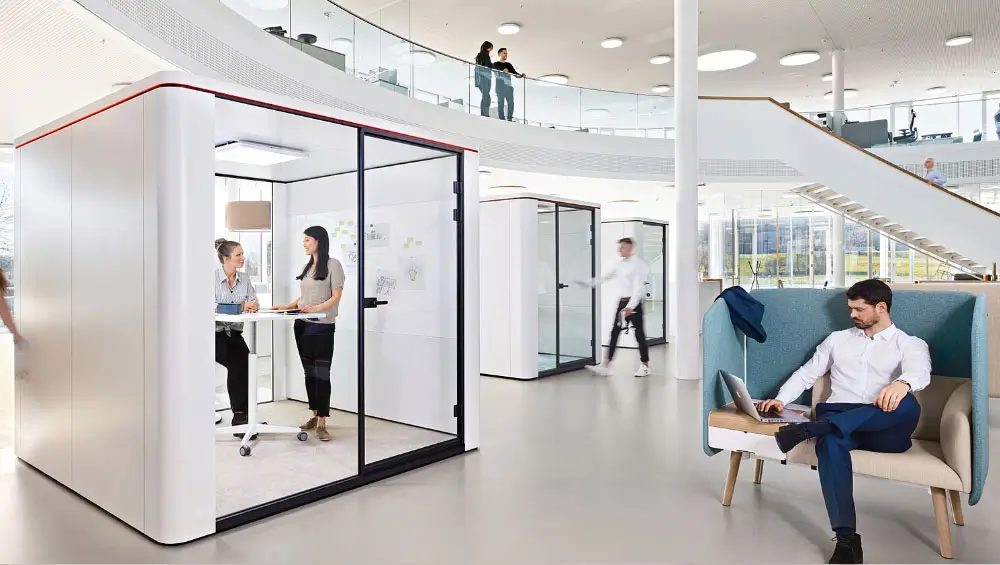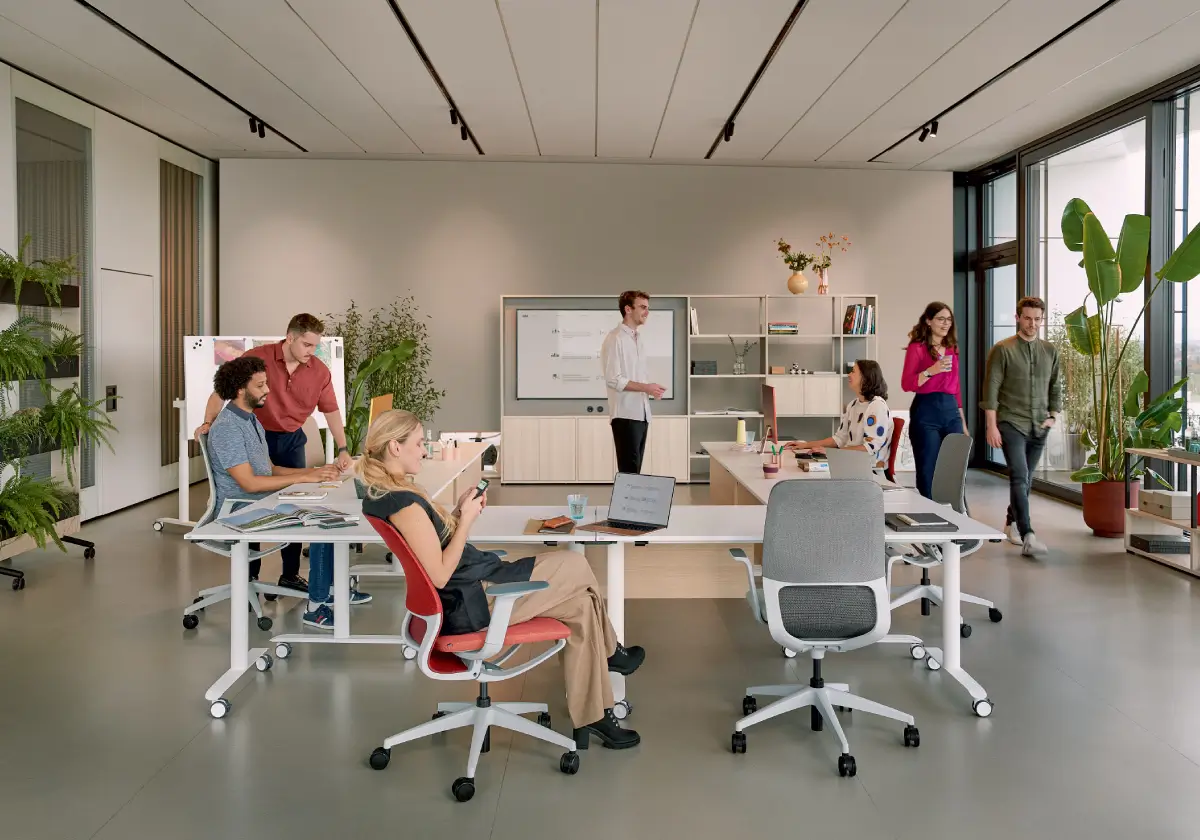
Blog
The Silent Revolution

The line between sound and noise is not always clear. What annoys or stresses one person may go unnoticed by another, and even our perception changes day by day. That’s why it’s essential to speak up about how we experience sound in the workplace—whether it’s conversations, laughter, or low murmurs.
Why Sound Matters
Experts agree that “ergonomic sound” is one of the most overlooked aspects of modern workspaces—and society in general. Even the most carefully designed buildings can be undermined by disruptive acoustics.
“Sound is a complex field. On one hand, it involves advanced physics. On the other, sound can’t be touched or seen, so it’s easy to overlook. Yet it profoundly affects our health, well-being, and productivity.”
Today, ergonomic experts focus on well-being and health just as much as furniture design, providing tools to tailor workspaces to individual needs, bodies, and tasks.
Technology Brings Acoustic Awareness
Flexible work arrangements and open-plan offices have put sound management at the top of the agenda. Industry experts are developing shared standards to measure how office furniture absorbs sound. While laws regulate hearing-damaging noise, the gray area of disruptive but non-damaging sound presents a bigger challenge.
Not All Sounds Are Noise
Sound shapes how we work, influencing stress levels, headaches, concentration, and even physical tension in the neck and shoulders. Yet some sounds are positive—colleagues talking, laughing, or listening to music can create a lively and engaging environment. Silence isn’t always the solution.
Perception is subjective: fatigue, stress, or high-concentration tasks make some sounds more intrusive on certain days. Open-plan offices require strategic acoustic design to protect employees while keeping spaces lively and collaborative.
Creating an Effective Acoustic Environment
Because sensitivity to sound varies by person and task, a flexible environment with multiple sound zones is ideal. Key strategies include:
- Consult an expert to analyze workflow and workspace interaction.
- Develop a sound strategy to reduce unwanted distractions and implement acoustic absorbers.
- Use panels and partitions—for desks, walls, and glass facades—to control noise without compromising openness or communication.
- Incorporate natural absorbers like curtains, parquet, and furniture for balance.
Start simple—install basic furniture first and adjust once the space is in use.
Eliminate the Noise Sources
Identify and isolate noise-generating equipment and areas—printers, elevators, walkways, cafeterias, and receptions. Panels between desks reduce sound without affecting collaboration. Dedicated rooms for meetings of any length also improve the acoustic environment.
“Behavior matters too. If taking a long phone call, step away. Speak at a normal volume, not louder than necessary. Quiet conversations are naturally less disturbing.”
Awareness is Key
Simply noticing and acknowledging sound can go a long way. Ideally, architects plan acoustics from the start, during design and construction. Once a building is complete, retrofitting sound solutions is expensive and challenging. Raising awareness of sound’s impact is crucial.
The encouraging news? Companies and investors are increasingly conscious of the issue. What’s emerging is a quiet revolution, reshaping workspaces for better focus, well-being, and productivity.
